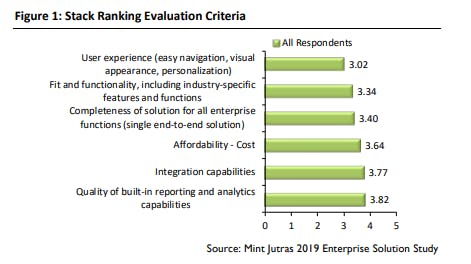
3 ways user experience (UX) can make or break ERP adoption
User Experience (UX), is often misunderstood to mean the same thing as User Interface (UI). While both UX and UI are critical features that can impact the chances of your ERP system realizing its full potential, the differences between the two must be understood when evaluating an ERP solution for your organization.
UI is the collection of tangible elements that allow a user to interact with an application or website - think of the menus, screens, and graphics that you interface with on your favorite mobile apps or the customized inbox layout on your work e-mail. UI is related to the application design and how it looks.
Unlike UI, UX is not defined by a specific set of visual objects, but rather what the user takes away from interacting with those visual objects that make up the experience. In this sense, UX is all about the subjective, internal feelings of the user. Below are key questions to consider when evaluating your ERP’s UX.
- How does the experience leave users feeling?
- Are users empowered or inhibited?
- Are users engaged or distracted?
- Are users encouraged or frustrated?
In a world where we spend most of our workday interacting with technology, shouldn’t we at least feel empowered, engaged, and encouraged while we are doing it?
In a recent study, participants ranked the top 6 traditional ERP evaluation criteria in order of (1) most important to (6) least important. The results show that user experience ranked as the most important criteria, and pulled ahead of ‘fit and functionality’ for the first time.

Here are three ways an ERP user experience can be improved to boost company performance and the value gained from your IT investment.
- The user experience should be simple
ERP systems are complex by nature. Hundreds, if not thousands, of modules and screens link together in harmony to provide an integrated view of business operations. A simple user experience can bypass daunting complexity by providing tools that enable users to get where they need to go at a moment’s notice. This experience not only drives efficiency but also keeps users satisfied by instilling a greater sense of confidence in the tools that are critical to their roles.
Think of the last time you made an online banking transaction, streamed a rented movie, or used a GPS app to guide you on a long trip. All of these functions in the consumer software space have evolved to place a premium on simplicity and efficiency – to the point where we rarely think about what we are doing. Enterprise business technology should offer the same user experience as our favorite apps – one that is simple and intuitive. - Personalization enhances the user experience
The ability to personalize or localize interfaces can boost ERP adoption and increase job performance. Users should have the freedom to personalize their experience based on their specific roles. In the same way we enjoy the convenience of web browser bookmarks, or personalized playlists on media streaming services, ERP systems should deliver a satisfying user experience.
When menu navigation, transaction processing, and report viewing is customized to suit local roles and requirements, users feel a sense of being at home in the system – a similar experience felt when logging in to our favorite social media and streaming services where everything is personalized to suit our tastes. - ERP usability boosts organizational performance
By providing intuitive, role-based modules and interfaces, a user-centric ERP with high usability can cut training time and boost organizational performance. A system with high usability correlates with gains in task efficiency and user satisfaction. Users are empowered with tools and screens tailored to their specific roles, thereby accelerating the adoption of the new system.
Companies focused on delivering better usability spend less time on training and more time on value-added tasks - translating to boosts in productivity, profitability, and user engagement.
To learn more about how you can enhance your ERP user experience, contact the Baker Tilly team or visit bakertilly.com/plex-online.
